Gnats, known as fungus gnats, can bother our homes and gardens. They are tiny, black, flying bugs that love damp soil in houseplants or greenhouses. Since they reproduce fast, it’s tough to get rid of them quickly. They survive by eating on organic stuff in the soil and plants. The adult gnats lay eggs in moist areas, where the larvae can grow on fungi and other things.
Knowing how they act is key to remove gnats effectively. For houseplants, make sure there’s not too much water for them to grow. Use sticky traps or traps with apple cider vinegar to catch the adults. This lowers their numbers.
A mix of hydrogen peroxide and water can kill the eggs and larvae in soil. This stops them from becoming adults and laying more eggs, which is key. These gnats only live about a week, but one can lay 300 eggs if conditions are right. So, acting fast is crucial. Also, helpful nematodes can eat the gnat larvae, reducing the pest numbers.
Wet soil in the garden creates a nice spot for gnats. To reduce this, regularly pick fruits and clean up any waste. Yellow sticky traps are great for reducing adult gnat levels. Outside, pyrethrin sprays can kill the bugs instantly.
For houseplants, preventing infestations is different. Let the soil dry out and use fresh soil for replanting. Neem oil on the soil can kill the larvae safely. These steps can help beat gnat problems without hurting the plants.
Key Takeaways:
- Proper soil drainage and avoiding overwatering are essential in preventing and getting rid of fungus gnats in houseplants.
- Sticky traps, homemade traps with apple cider vinegar, and yellow sticky traps are effective in controlling adult fungus gnat populations.
- A mixture of 1 part hydrogen peroxide and 4 parts water can be used to treat eggs and larvae in the soil.
- Introducing beneficial nematodes can help control pest populations in both indoor and outdoor spaces.
- Neem oil, when diluted and applied to the soil, can suffocate larvae and disrupt the fungus gnat life cycle.
Gnats vs. Fruit Flies: Understanding the Difference
When you see tiny flying bugs, it’s important to know what they are. This helps you deal with them correctly. Many people mix up gnats and fruit flies. But, there are ways to tell them apart.
Size and Appearance
Fruit flies are very small, only about ⅛ inch in size. They look like house flies and have big eyes. Gnats are similar in size but are darker, usually grey or black. Fungus gnats, a type of gnat, are also very small, usually under ⅛ inch.
Habitat and Behavior
Fruit flies love overripe fruits and vegetables. They’re also drawn to sweet drinks and alcohol. They can carry diseases on food. You might see them near fruit bowls, garbage cans, or drains.
Gnats, especially fungus gnats, prefer to lay eggs in damp organic matter. This includes things like compost and potting soil. They like places with wet soil, often near potted plants. They can harm plants by damaging roots.
Control Methods
Dealing with fruit flies and gnats requires different approaches. To control fruit flies, use traps and keep things clean. Get rid of old fruits and veggies to stop them from multiplying. Companies like Hawx Pest Control can also help.
Gnats can be fought with specific methods. For example, adding sticky traps to plant pots can catch fungus gnats. Beneficial nematodes can help by eating gnat larvae. It’s also crucial to keep drains clean to prevent drain flies.
Knowing how to tell fruit flies and gnats apart helps a lot. It means you can use the right methods to keep your home or garden free of these pests.

Getting Rid of Gnats on Plants in the House
Gnats, especially fungus gnats, are tiny black insects that fly around. They love to live in the damp soil of your houseplants. Their babies eat the roots, which makes plants get sick and turn yellow.
To get rid of gnats, you must find where they’re coming from. They like places with rotting food, open trash, and unsealed produce. So, throw out old food, clean up well, and keep food sealed, making it hard for them to get into your place.
Using traps is a good way to catch adult gnats. Sticky traps catch them while vinegar traps attract and kill them. Put these traps close to where you see gnats most. This will cut down their numbers.
To stop gnats from laying more eggs, treat your sink drains. Mix hydrogen peroxide with water. Pour this mix down the drain. It will kill any eggs or babies, stopping more gnats from coming.
To avoid more gnats, prevent them. Don’t overwater your plants and make sure water drains well. Also, keep your home clean and food sealed. This makes it less attractive to gnats.
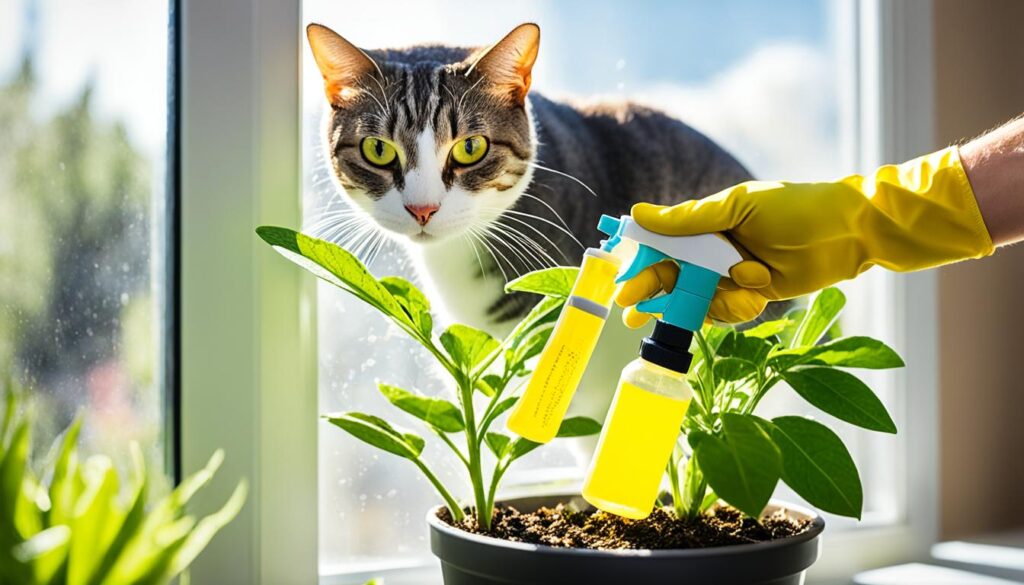
Gnat Infestations in Sink Drains
Gnats often take over sink drains because it’s wet there. Cleaning with vinegar and baking soda breaks down stuff that attracts them. And don’t forget to run hot water down the drains often. This keeps them away.
By using these methods together, you can get rid of gnats for good. Keep up with cleaning and keeping things dry to stop them from coming back.
Getting Rid of Gnats on Plants in the Garden
Gnats often bother gardens by buzzing around fruits, veggies, and flowers. You can control them by doing a few things. Start by picking fruits and veggies often to take away their food. Also, throw out any fruits that have gone bad. And keep your garden clean by getting rid of old leaves and other waste. This stops gnats from wanting to stick around.
If you water too much, you might see more gnats. They love damp soil because it’s perfect for laying their eggs. Be sure your plants aren’t getting too much water. If the soil can drain well, it won’t be as inviting to gnats.
Getting rid of places where gnats can lay eggs outside helps a lot. This means moving leaf piles and anything that holds water. Less of these spots means fewer gnats in the long run.
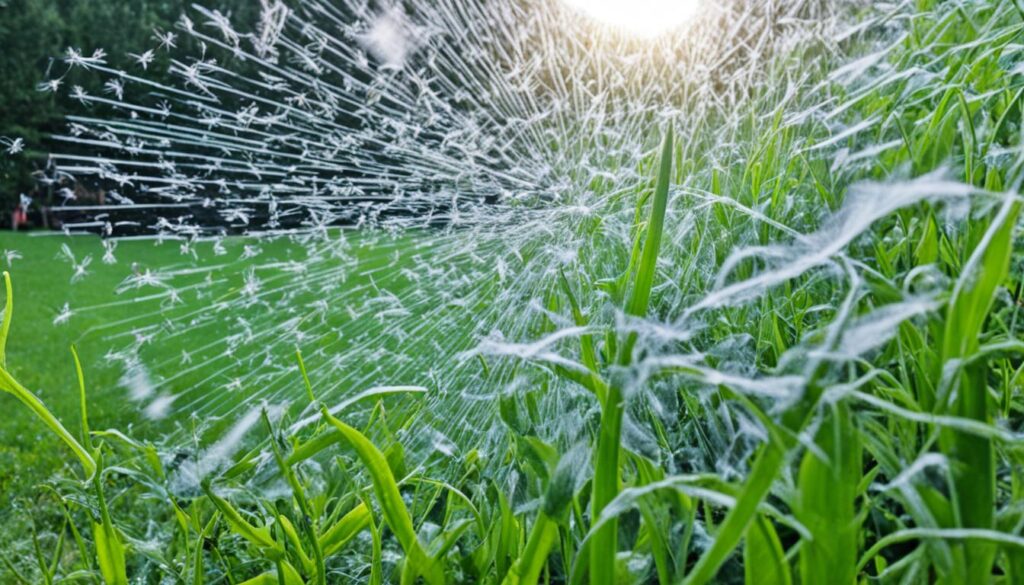
You can also use special traps to catch gnats. Sticky traps or ones with vinegar in them work well. Put these around your garden to catch gnats and lower their numbers.
Products like sprays or torches can keep gnats away too. They make your garden a place gnats don’t like. Just make sure these products won’t hurt your plants or the earth.
By doing these things, you can keep your garden from being taken over by gnats. Good soil drainage, less water, cleaning up outside, and using safe repellents all help. This way, you can have a garden where gnats are not welcome.
Getting Rid of Gnats on Plants
Fungus gnats are small, black, and fly around. They bother people who have houseplants a lot. These pests live in the damp soil of indoor plants. They lay eggs there and multiply fast. This makes them hard to get rid of. Fungus gnat larvae eat the roots and stems of plants, which makes the plants weaker.
The soil in plant pots is perfect for fungus gnats. The adult gnats lay eggs in this moist soil. The larvae then eat the fungi and other organic stuff in the soil. If you want to get rid of them, you have to fight them in a few ways.
1. Choose Insect-Resistant Houseplants
Pick plants that don’t attract fungus gnats. These special plants will not get as many pests.
2. Natural Remedies
A friendly way to deal with gnat problems is to use natural tricks. You can make a spray with lemon-scented soap and water. Mix some soap in a spray bottle of water and use it on your plants. The soap kills the gnats and their larvae.
3. Allow the Soil to Dry Out
Gnats like wet soil. So, letting the soil dry will stop them from growing. Water your plants less often, but make sure the top layer of soil is dry before adding more water.
4. Repot with Fresh Soil
If your plants are full of gnats, a good step is to replant them with new soil. Take the plant out carefully. Remove the old soil and replace it with fresh soil. This change will break the gnat life cycle.
5. Proper Watering and Maintenance
Good plant care keeps gnats away. Don’t overwater your plants. Check the soil before watering. Also, keep an eye out for pests or diseases. Deal with problems as soon as you see them.
Using these ideas and looking after your plants well can beat the gnats. Your indoor plants will be healthier and happier without these pests.
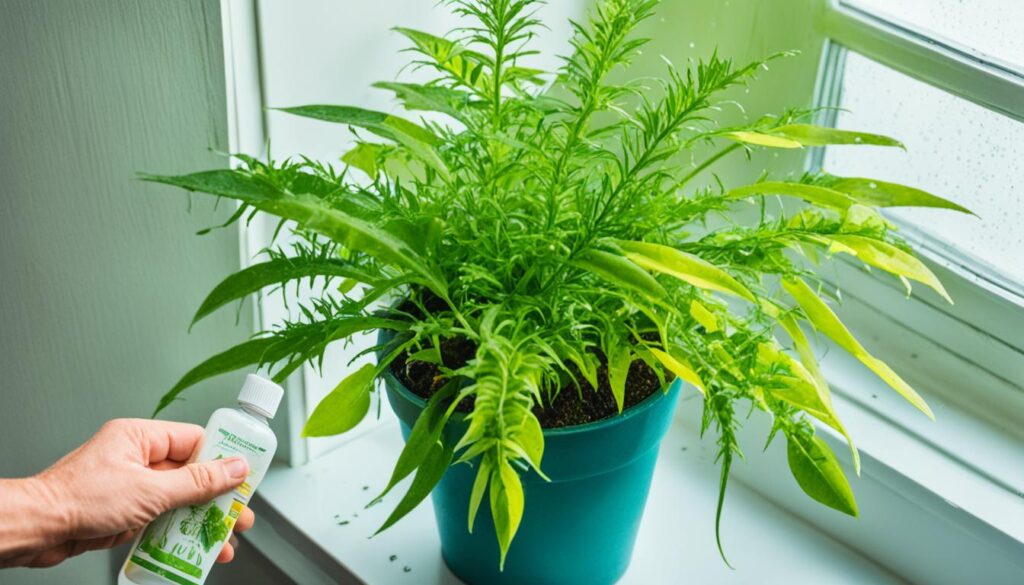
Fast Ways to Get Rid of Gnats
If gnats are bugging you and you want them gone fast, there are easy methods to try. These ways are safe and don’t need any harsh chemicals. You can handle gnat populations both inside your home and out in the garden.
1. DIY Gnat Traps
Making your own gnat traps is a smart move. You can use items from your home. Try a vinegar trap or a wine trap to fight the gnats.
Vinegar Trap for Gnats: Use apple cider vinegar and a few drops of dish soap in a small dish. Cover it with plastic wrap and poke some holes. Gnats will fly in and get stuck.
Wine Trap for Fruit Flies: In a dish, put red wine and a bit of dish soap. The wine’s smell will draw in the fruit flies. They’ll fall in and drown.
2. Candle Trap
A candle trap is an easy, no-fuss way to deal with gnats. Put a candle near a dish filled with water. Gnat will fly to the light and fall into the water. Be careful with open flames.
3. Drain Treatment
Gnats often come from sink drains. To clean them, mix salt, baking soda, and vinegar. Pour this down the drain. Follow it up with boiling water. This kills the gnats and gets rid of bad smells.
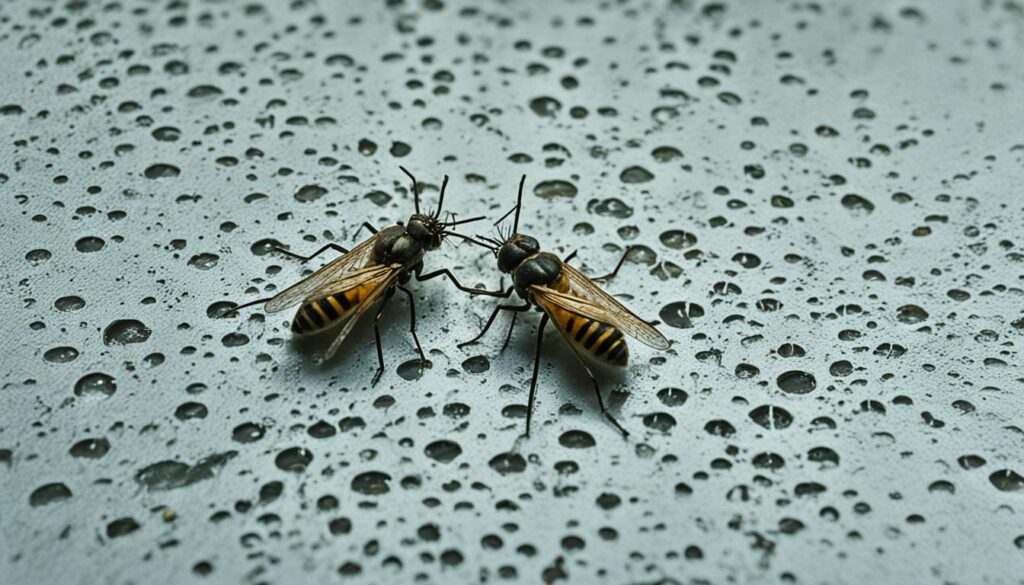
Don’t forget to do these things along with other preventive actions. Remove old, wet plants and things that attract gnats. By doing so and by using easy solutions, you can solve your gnat issue. This way, you can keep your space gnat-free.
Tips for Preventing Gnats
Fungus gnats are small flying bugs that like moist soil in your plants. They can be hard to get rid of. To keep your home and garden gnat-free, take some steps ahead of time.
- Keep your kitchen clean and dry: Gnats like food and sweet smells. Wipe down your kitchen often. Fix leaks to make sure it’s not too humid.
- Store food properly: Put fruits and veggies in the fridge or sealed containers. This stops gnats from coming around.
- Seal entry points: Gnats sneak in through small openings. Check doors, windows, and walls for gaps. Seal them up tightly to keep gnats out.
- Proper drainage: Too much water makes a good spot for gnats to live. Be careful not to overwater your plants. Make sure they can drain well.
- Regularly clean your compost bin and trash cans: Gnats love old food. If you have a compost bin, keep it clean. Also, cover your trash cans to avoid gnat gatherings.
- Outdoor precautions: Gnats are less interested in lights with sodium bulbs. Use them outside. Keep bird baths and water areas clean to prevent gnats from laying eggs there.
To cut the risk of gnat problems, follow these steps. Remember to check new plants for gnats or their eggs. This helps keep your other plants safe.
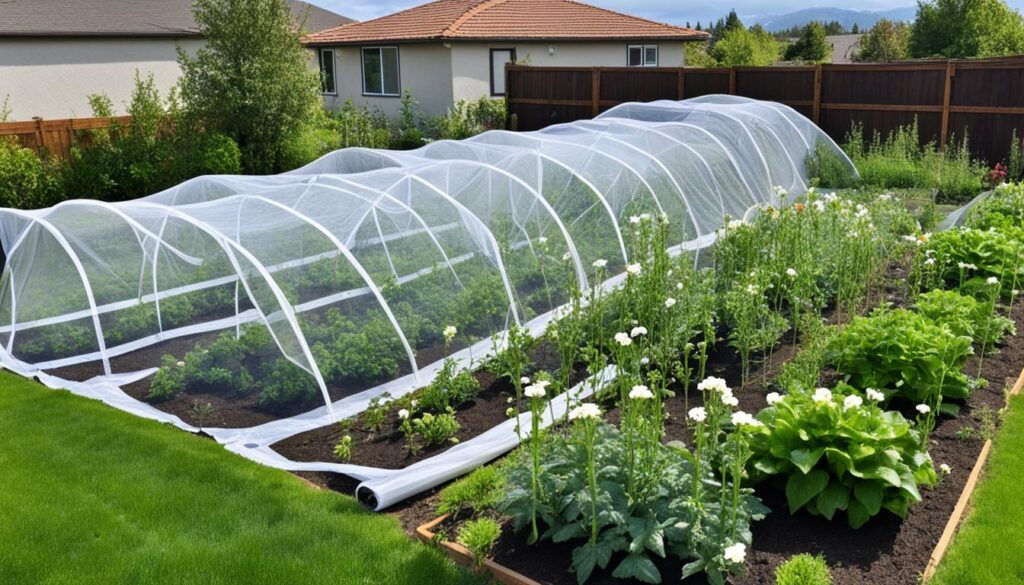
Conclusion
Gnats are a common bother at home and in the garden. By knowing how they act and using the right methods, you can manage them. It’s crucial to spot the gnat type and its favorite breeding spots to reduce their numbers.
If you find gnats indoors, traps and bug sprays are helpful. You can use natural ways too. It’s also vital to keep your indoor and outdoor areas clean and not so wet.
To keep gnats out of the garden, take good care of it. This means watering plants right and getting rid of old plant material. Using safe methods like neem oil can also work well.
When things get really bad, you might need to call the pros for help. But always aim to stop gnats before they come in. Making your space less humid and cleaner will help a lot. This way, your home and garden will be a better place without these annoying bugs.
